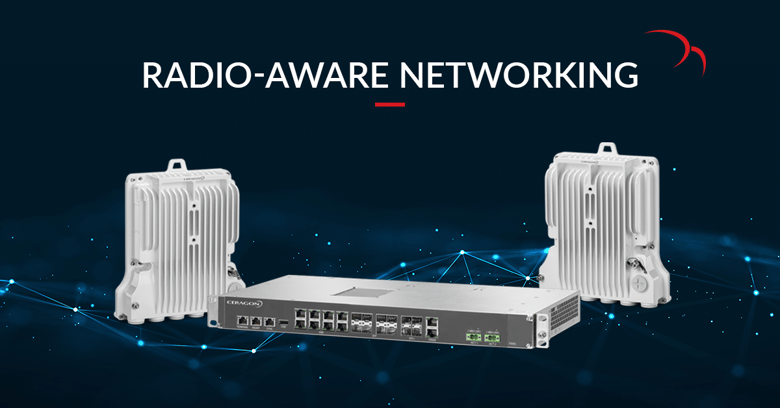Enhancing 5G network performance in a disaggregated environment
Or – how to make sure your open network is not too open…
Disaggregated open networking is a concept that is evolving and gaining traction as mobile operators seek scalability, agility and flexibility (and many other “ty” words) while planning their network evolution towards 5G. Disaggregated wireless hauling is the most recent network domain to adopt the open networking concept, allowing operators to connect radios to networking elements over a standard Ethernet interface.
In theory, this means that any all-outdoor radio connected to a cell site router is actually a disaggregated wireless hauling node. In reality, there is a bit more to it. Connecting a radio to a router is only “half disaggregation.” While it allows you to manage the radio and networking innovation and evolution paths separately and leverage the best-of-breed approach on both paths, it lacks two main components for you network evolution: networking disaggregation and radio-aware networking.
Networking disaggregation, i.e. disaggregating networking hardware from networking software, is vital for scalability, flexibility and cost-efficiency, and for obvious reasons. Radio-aware networking, on the other hand, is equally important but a bit harder to comprehend – until now.
Radio-aware networking allows operators to achieve optimal performance of their network and optimal utilization of their wireless hauling resources.
This is achieved with four major building blocks:
- Radio-aware flow control – Radio links are subject to changes, over time, in their available capacity (due to different fading conditions, resulting in change of modulation). As a result, the networking unit is required to be aware of the available capacity of the link to which it is connected in order to engineer the traffic in a manner that will minimize packet/frame loss. For that, a flow-control mechanism needs to be established between the radio unit and the networking unit, typically based on a standard protocol such as Ethernet Bandwidth Notification (ETH-BN). This capability is required on both the networking element and the radio element.
- Timing and synchronization – The importance of timing and synchronization grows as mobile networks evolve. The requirements become more stringent as you move from LTE to LTE-Advanced and LTE-A Pro, and become stricter, by far, as 5G URLLC services are introduced. For that, both the networking gear and the radio element should support timing protocols such as SyncE and IEEE 1588-TC/BC (transparent clock/boundary clock).
- Centralized management – When it comes to large multi-direction nodes, having a separate management entity for each of the nodes (both radio and networking) complicates network operations and troubleshooting. Having a centralized management entity that aggregates radio and network elements into a single management entity resolves this issue.
- Layer-1 carrier bonding – 5G networks typically call for multi-carrier configurations in order to support the growing requirements for higher capacity and higher availability. Such configurations pose a challenge of traffic distribution between the different carriers of a link – carriers that might be of different capacity and that fluctuate over time with regards to their available capacity. A basic traffic distribution method, such as link aggregation group (LAG), results, in most cases, in sub-optimal utilization of radio resources. In some cases, using LAG may result in an effective capacity that is roughly 50% of the potential capacity of the link. The solution for that is a layer-1 carrier bonding mechanism, in which bits, frames and packets are distributed between the links in a granular and dynamic manner, leading to optimal use of the valuable radio resource. In the disaggregated architecture, this kind of traffic distribution needs to be performed over standard Ethernet connections between the networking unit and the different radio units. The radio-aware flow control mechanism mentioned above is a key element in having an optimal layer-1 carrier bonding link.
The availability of ETH-BN for radio-aware flow control is common, and this protocol is supported by most networking, as well as radio, vendors. Timing protocols over Ethernet is slightly less common, but still can be achieved using standard networking gear.
Centralized management and layer-1 carrier bonding over Ethernet, on the other hand, are not supported by standard routers. If you plan to utilize multi-carrier solutions in an open networking environment, then you should seek a solution that not only allows you the scalability and flexibility of open networking, but also ensures optimal resource utilization – namely a solution enabling radio-aware open networking.
Don't miss our eBook !


